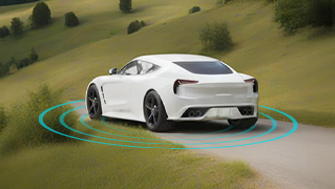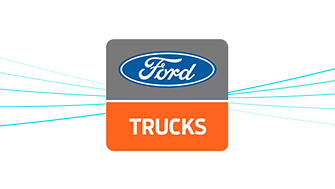
Intro to SDV Cyber Security: Securing the Future of Automotive
Intro to SDV Cyber Security: Securing the Future of Automotive
The automotive industry is in the midst of a digital revolution – and this transformation is being powered by software. Software-defined vehicles (SDVs) have set the tone for the industry going forward, with OEMs and Tier 1 suppliers investing massive resources in software development.
Leveraging cutting-edge technologies and equipped with advanced software and connectivity features, SDVs promise a future of increased safety, efficiency, and convenience. However, these new technologies do not come without risk. To enable automotive innovation in a software-driven world with minimum risk, cyber security and data privacy are crucial.
This post examines the intricacies of SDV cyber security, exploring the challenges and considerations facing vehicle manufacturers as they look for ways to protect SDVs from cyber threats.
What is a Software-Defined Vehicle (SDV)?
SDVs represent a paradigm shift in the automotive sector, where traditional mechanical components are augmented or even replaced by software-driven systems. This shift opens up new possibilities for autonomous driving, enhanced connectivity, and a myriad of innovative features that redefine the driving experience.
From an architecture standpoint, SDVs consist of one or more high-performance computers (HPC) and multiple zonal controllers. The application layer is separated from the hardware layer by a vehicle operating system (e.g., AUTOSAR, Linux), which allows the software to be flexibly expanded and adapted. A key advantage of SDVs is that software updates are continuously received over the air (OTA), so that the vehicle’s functions and capabilities can be constantly updated and improved.
The Rise of Autonomous and Connected Vehicles: Threats and Challenges
As SDVs become more prevalent on our roads, the need for robust automotive cyber security measures becomes paramount. Each line of code, autonomous function, software-based service or OTA update in SDVs requires having the proper cyber security measures in place. For these reasons, cyber security is becoming just as important as functional safety and quality for many OEMs.
Autonomous vehicles in particular rely heavily on complex software algorithms and sensors to navigate the environment, making them susceptible to cyber threats that could compromise their functionality. Similarly, connected vehicles, which communicate with other vehicles and infrastructure to improve traffic flow and safety, are vulnerable to cyber attacks that could manipulate these communications for malicious purposes.
SDV Cyber Threats: A Closer Look
SDVs may be targeted by several types of cyber threats, including:
Malware and Ransomware Attacks: Malicious software can be injected into the SDV’s system, compromising its functionality or even taking control of critical components. Ransomware attacks could lock down a vehicle or even an entire vehicle fleet hostage, demanding a huge ransom payment to unlock the vehicles. With over 493 million ransomware attacks on organizations’ IT networks in 2022 (source: Statista), such a scenario is becoming ever more likely.
Remote access Vulnerabilities: The increasing connectivity of SDVs exposes them to greater cyber security risk. New vulnerabilities are published regularly, impacting millions of vehicles across virtually all brands. By exploiting specific vulnerabilities, bad actors could gain access to safety-critical systems (e.g., braking), access personal data, or even start a car from a remote location. This was demonstrated in the infamous Tesla hack, where a 19-year-old IT specialist exploited a vulnerability in a third-party app to gain remote control of multiple vehicle functions.
Sensor Spoofing: Autonomous vehicles heavily rely on sensors to perceive their environment. Cyber attackers may attempt to deceive these sensors by sending false signals, leading the vehicle to make incorrect decisions.
Denial-of-Service (DoS) Attacks: DoS attacks can disrupt the normal functioning of SDVs by overwhelming their communication networks with a flood of bogus requests. This can result in a loss of connectivity and hinder the vehicle’s ability to make informed decisions.
Key SDV Cyber Security Considerations
When formulating an SDV cyber security strategy, OEMs should consider the following key factors:
Data Security and Privacy: SDVs generate and collect vast amounts of data. While this data helps automakers improve vehicle operations and personalize the driver experience, it also introduces serious data privacy concerns. Beyond knowing your driving habits, preferred travel routes or music tastes, some cars collect highly personal data, like conversations taking place in the vehicle and cabin camera footage. Making matters worse, Mozilla reports that most car brands (84%) admit to sharing or selling our data, while a vast majority (92%) offer little to no control over our personal information.
Network Security: As SDVs rely on extensive networks for communication and updates, securing these networks is imperative. Implementing robust encryption protocols and authentication mechanisms can prevent unauthorized access and manipulation of critical systems.
Real-time Threat Detection: Given the dynamic nature of cyber threats, SDV cyber security systems must be equipped with real-time threat detection capabilities, such as firewall and intrusion detection systems (IDS). This involves continuously monitoring the vehicle’s software and network for anomalies that may indicate a potential cyber attack.
Secure Software Development: Building secure software is fundamental to SDV cyber security. Adopting best practices in secure software development, such as code reviews, penetration testing, and regular software updates, can help minimize vulnerabilities. In fact, many OEMs and Tier 1 suppliers are shifting vulnerability management processes to an earlier stage of the software development (CI/CD) process.
Multi-layered Security Approach: OEMs should consider implementing a multi-layered security approach for SDVs based on a combination of various security measures to create a robust defense against cyber threats. This includes tools for monitoring in-vehicle network traffic (e.g., firewall, IDS), identifying and responding to potential cyber risks, mitigating vulnerabilities and protecting vehicle fleets on the road (e.g., VSOC).
Continuous Monitoring and Updating: Continuous monitoring and updating of cyber security measures are essential for OEMs and suppliers. The dynamic nature of cyber threats requires a real-time response, and SDV systems must be equipped with the capability to adapt swiftly to emerging risks. Regular software updates, informed by ongoing threat assessments, serve as a proactive measure to address vulnerabilities and enhance the overall security posture of SDVs.
SDV Cyber Security Requires Collaboration Across the Ecosystem
As SDVs revolutionize the automotive industry, the growing sophistication of cyber threats necessitates collaboration among stakeholders, including manufacturers, cyber security experts, regulatory bodies, and even consumers. The automotive industry must foster collaboration and information sharing to stay ahead of emerging threats. Sharing insights into cyber threats and vulnerabilities can help develop effective countermeasures across the entire ecosystem.
In this context, regulatory frameworks play a pivotal role in shaping the cyber security landscape for SDVs. Governments worldwide must actively engage with the industry to develop and enforce standards that set a baseline for security measures. These standards should evolve in tandem with technological advancements, creating a flexible yet robust framework that ensures the continued safety and security of SDVs.
Enabling Automotive Innovation with SDV Cyber Security
Looking ahead, a key aspect of SDV cyber security lies in the intricate dance between innovation and protection. Manufacturers must find the balance between pushing the boundaries of technological possibilities and fortifying their products against bad actors. This balance requires a mindset that integrates cyber security into the very fabric of SDV development, from the conceptual stages to the vehicle’s end-of-life.
In conclusion, securing software-defined vehicles requires a holistic and collaborative effort. By understanding the nuances of SDV cyber security, embracing a proactive mindset, and implementing robust security measures, OEMs and Tier 1 suppliers can unlock the full potential of automotive innovation, while ensuring the safety and security of the next generation of vehicles.






